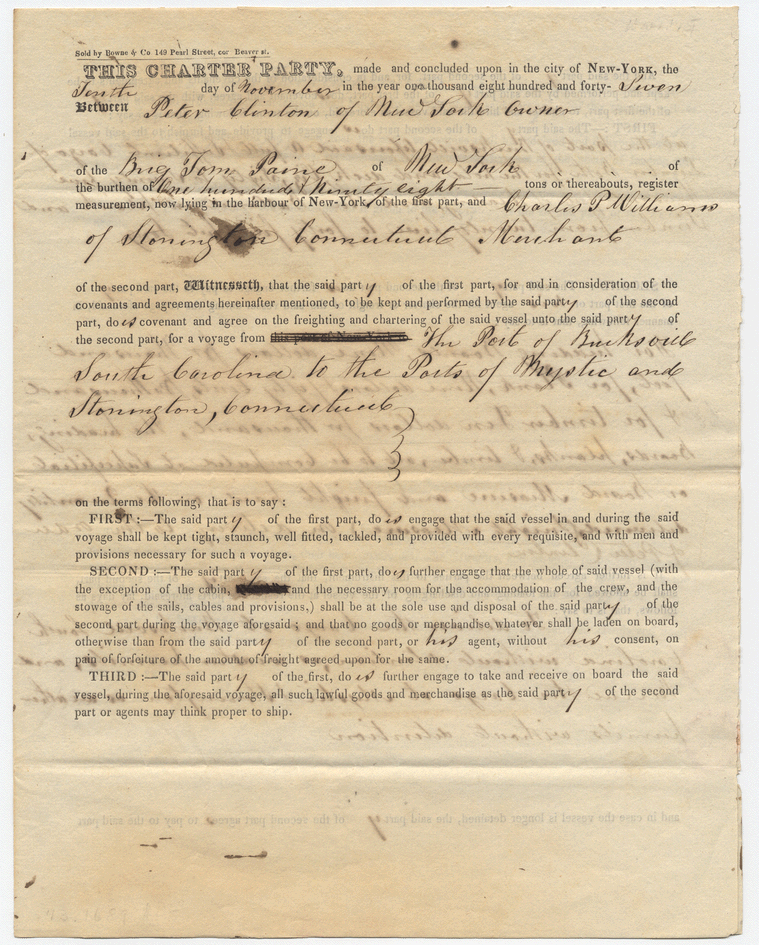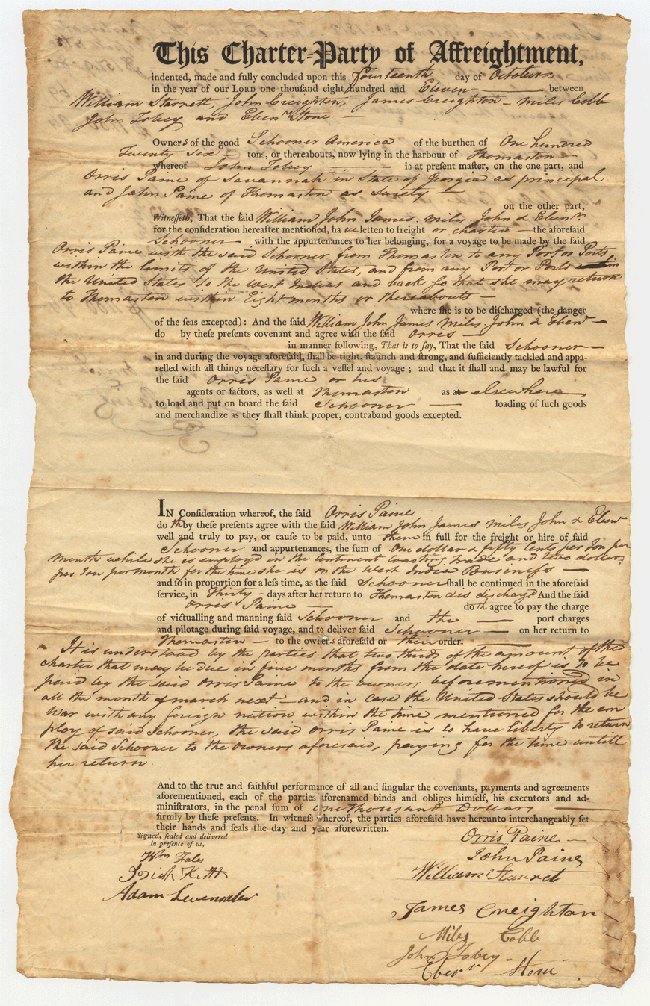Early documents were handwritten, with the printed format appearing by the nineteenth century. Usually a one-page document, no standard size, although an approximate measurement of 8 1/2″ x 13″ was common. The words “Charter Party” often appear prominently in the beginning statement. Occasional small engravings may appear, and the printed name and address of the agent or broker executing the document can sometimes be found near the top.
A Charter Party is a written contract by which the owners or master lets the whole or part of their ship to a merchant for the transportation of goods on a particular voyage. The sum agreed upon to hire the vessel is referred to as the “freight.” The document settles the terms upon which the cargo is to be carried. The master or owners usually bind themselves, the ship, tackle and furniture, that the cargo will be delivered (danger of the seas excepted) in good condition, to the place of discharge. They also pledge to sufficiently outfit the ship to properly perform the voyage, and to safely stow the cargo. The merchant or freighter, on his part, promises to comply with the payment for freight upon delivery of his goods, to load and unload in a given amount of time, and to allow so much for demurrage for delays beyond that time. Both parties agree to penalties for non-performance of their respective obligations. Charter Partys are common items in maritime collections, and are valuable research sources for the study of shipping conditions and procedures.

This is the first page of a four-page Charter Party for a coasting voyage from South Carolina to Connecticut, 10 November 1847.

A charter agreement for a voyage to the West Indies, 14 October 1811. Although many Charter Partys were handwritten at this time, this one-page printed format was not uncommon.
